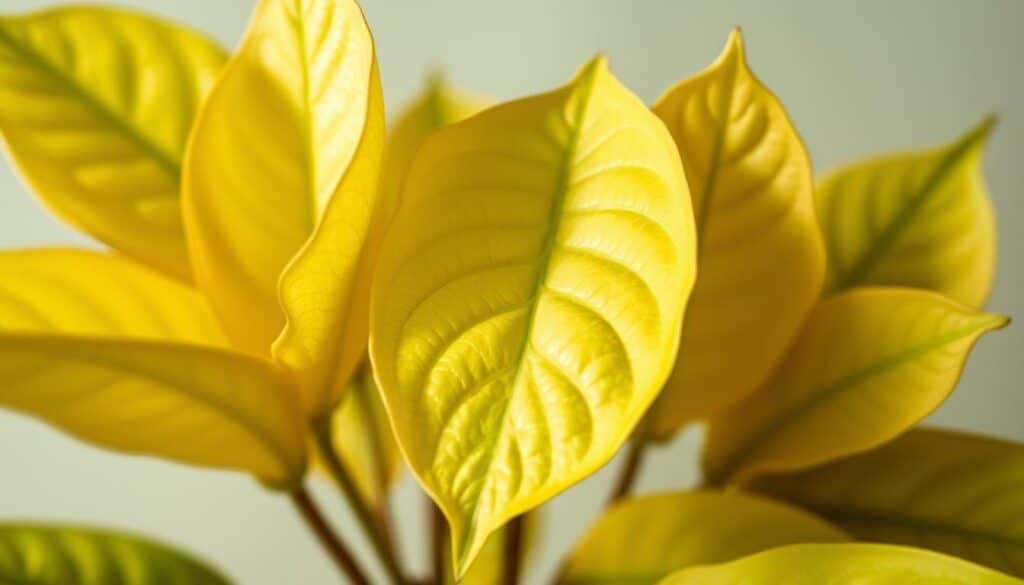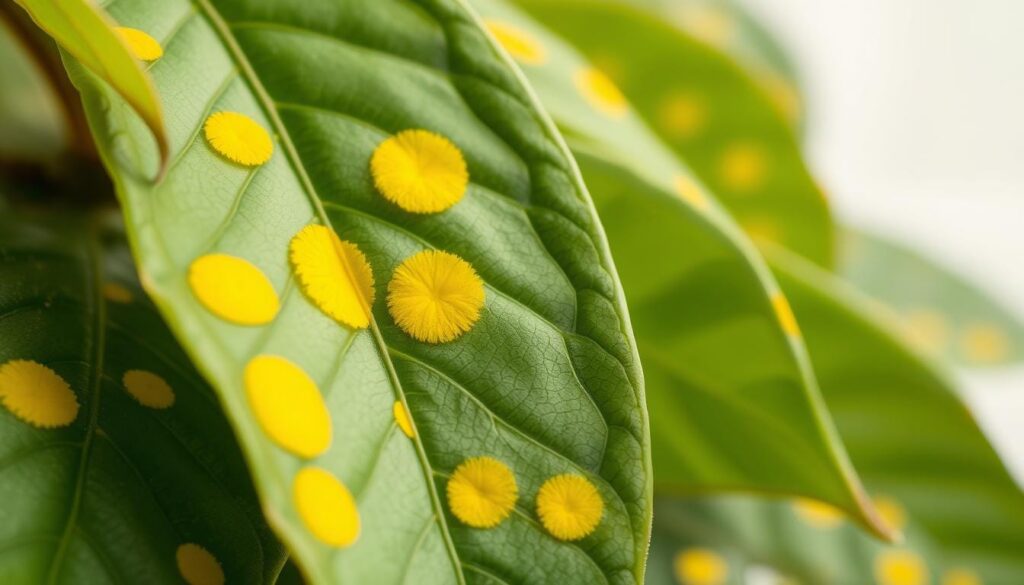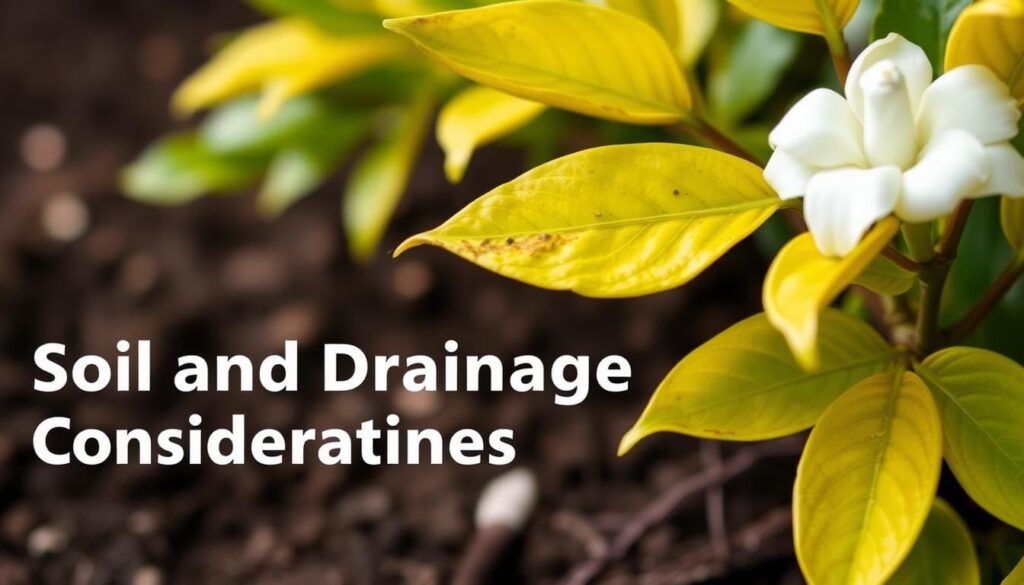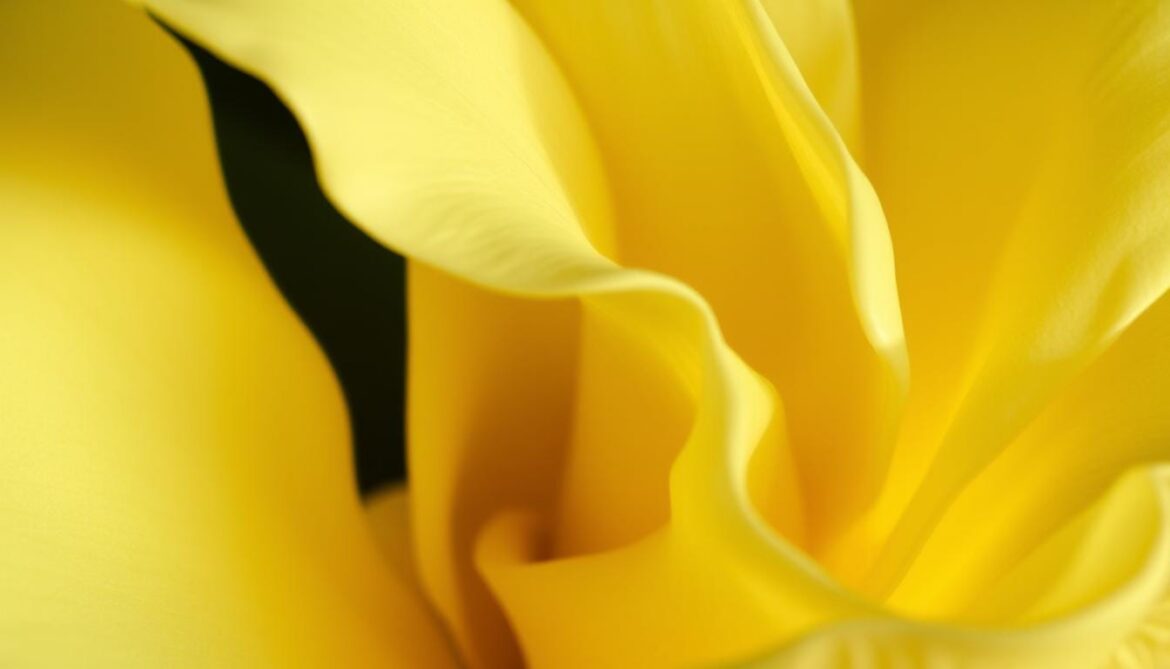Watching your gardenias turn from lush green to yellow is heartbreaking. You’ve cared for them, but now their leaves are drooping. Yellow leaves mean your gardenias need help.
Most yellow leaves can be fixed. This guide will help you find and fix the problem. You’ll learn how to make your gardenias green again and prevent future yellowing.
Key Takeaways
- Yellowing gardenia leaves often signal overwatering, nutrient gaps, or poor soil drainage.
- Early action is critical to stop damage before it harms the plant’s health.
- Adjusting watering, soil pH, or light exposure can reverse yellowing foliage.
- Root rot from soggy soil is a major cause of yellowing gardenia leaves.
- Regular checks for pests or environmental stress improve recovery chances.
Understanding Gardenia Plant Needs
Gardenias do best in certain conditions. If these needs aren’t met, they can face gardenia leaf problems. Knowing their natural habitat helps avoid issues like gardenia plant yellow leaves.
Overview of Gardenia Plant Requirements
These plants need:
- Light: Bright indirect sunlight. Direct sun can scald leaves.
- Water: Regular watering is key, but avoid waterlogged soil.
- Soil: They prefer acidic, well-draining mixes rich in organic matter.
- Temperature: They thrive in warm, frost-free environments (60–75°F).
- Humidity: High humidity is important, as it mimics their tropical origins.
Key Factors Influencing Growth
Three critical elements affect their health:
- Soil pH: It should be between 4.5–6.0 for good nutrient uptake. Imbalance can cause yellowing.
- Nutrient Access: Lack of nitrogen and iron shows as yellow leaves.
- Seasonal Care: Adjust watering in winter to prevent root rot.
Ignoring these needs can weaken plants, leading to gardenia leaf problems. Proper care meets their natural needs, preventing gardenia plant yellow leaves.
Common Causes of Yellowing Leaves
Gardenia leaves turning yellow can come from many issues. Spotting patterns in gardenia leaf discoloration helps find the main problem. Here are the top four causes gardeners often face:

Nutrient Deficiency
Yellowing often starts with a lack of nutrients. Iron or magnesium deficiencies make veins stay green while leaves fade. Nitrogen deficiency turns leaves yellow and slows growth. Signs include:
- Yellow spots between leaf veins (iron deficiency)
- Uniform yellowing from leaf tips (magnesium lack)
- Stunted new growth with pale foliage
Overwatering and Root Rot
Constantly wet soil harms roots, causing gardenia leaves to turn yellow. Symptoms start at the base and spread up. Root rot occurs when roots drown, making roots dark and mushy.
Poor Drainage Conditions
Compacted soil or pots without drainage holes trap water. Even well-watered plants suffer if roots sit in water, making leaves worse.
Environmental Stress Factors
Extreme temperatures or drafts stress gardenias. Sudden cold snaps or prolonged heat harm photosynthesis. A quote from the American Garden Society says:
“Fluctuating temperatures above 90°F or below 50°F force gardenias into survival mode, causing leaf yellowing.”
Low humidity or wrong light also cause stress.
Identifying Nutrient Deficiencies
Yellow spots on gardenia leaves often signal hidden nutrient issues. Proper diagnosis prevents over-amending soil. Start by observing leaf patterns to pinpoint deficiencies before applying fixes.

Signs of Nitrogen Deficiency
Older leaves turn uniformly yellow from the base upward. This deficiency slows growth and reduces flower production. Check for faded foliage on lower branches first.
Iron Chlorosis: Recognizing the Symptoms
New growth shows yellow tissue with green veins in iron chlorosis. Leaves may develop white or yellow mottling. Severe cases lead to leaf drop. Symptoms focus on younger growth.
- Yellowing between leaf veins
- Pale new leaves while stems stay green
- Leaf edges may brown as deficiency worsens
Importance of Proper Soil pH
Soil pH below 5.5 or above 6.5 blocks nutrient uptake. Alkaline soils trap iron even if present. Clemson Extension advises testing pH yearly to avoid gardenia leaf yellowing solution failures. Adjust pH first before adding fertilizers.
Proper pH balance unlocks nutrients, preventing false deficiency symptoms. Use sulfur to lower pH or lime to raise it gradually.
Always test soil before applying amendments. Misapplied fixes can worsen root damage.
Watering Practices for Gardenias
Proper watering is key to stop how to fix yellow gardenia leaves and gardenia leaf problems. Changing how you water can help stressed plants grow strong and healthy.

“Water gardenias like they thrive in their natural humid habitats—moist but never soggy.” – National Garden Bureau
Signs of Underwatering vs Overwatering
| Underwatering Symptoms | Overwatering Symptoms |
|---|---|
| Crispy, dry leaf edges | Yellow leaves at base first |
| Wilting even with adequate soil moisture | Yellowing from the bottom up |
| Soil pulls away from pot edges | Sticky residue on leaves |
Best Watering Techniques for Gardenias
- Check soil weekly using the finger test: Insert finger 2 inches into soil. Water only if dry.
- Water deeply but infrequently. Aim for 1 inch of water weekly, adjusting for rainfall.
- Use room-temperature water to avoid shocking roots. Let chlorinated water sit 24 hours first.
- Mulch around plants to retain moisture. Use 2-3″ of pine bark or shredded leaves.
- Winter care: Reduce watering by 50% during dormancy. Increase again in spring.
Changing your watering habits can fix early gardenia leaf problems. Regular care stops root rot and keeps nutrients flowing. Always check the soil to keep it just right.
Soil and Drainage Considerations
Yellowing gardenia leaves often come from soil and drainage problems. The right soil and water flow are key for nutrient uptake and root health. Without these, even proper watering can’t prevent yellow leaves.

Types of Soil Suitable for Gardenias
Gardenias do best in acidic, well-draining soils with lots of organic matter. Stay away from heavy clay or compacted soils that hold too much water. Here are some good options:
- Commercial mixes: Azalea or camellia blends sold at nurseries.
- Homemade mixes: Mix peat moss, pine bark, and perlite for aeration.
- Container soils: Add coarse sand to potting mixes for better drainage.
The Importance of Good Drainage
Poor drainage can kill roots by cutting off oxygen. This leads to yellow leaves and root rot. To check soil drainage, dig a 1-foot hole. If water doesn’t drain in 4 hours, you need to improve it:
- Amend soil with compost or sand to break up compacted layers.
- Raise garden beds or use pots with drainage holes.
- Check pots daily to ensure water flows freely.
For severe cases, look at tree disease guides to spot root rot early.
Fixing soil and drainage helps gardenias stay green. Make sure to test soil pH and check regularly for healthy leaves.
Environmental Factors Impacting Gardenias
Changes in temperature and dry air can make gardenia leaves turn yellow, even with good care. Knowing how extreme weather stresses plants helps us find the right solutions.

Effects of Temperature on Gardenia Health
| Temperature Range | Impact | Actions |
|---|---|---|
| Cold damage, leaf discoloration | Move indoors, use blankets in frost | |
| 65–75°F (18–24°C) | Healthy growth | Keep in partial shade during summer |
| >85°F (29°C) | Heat stress, wilting | Provide shade, avoid direct midday sun |
Humidity Levels and Their Importance
Gardenias love humid environments, similar to the tropics. Low humidity can turn leaves yellow and cause buds to drop. Here are some solutions:
- Place a humidity tray with pebbles and water near plants
- Mist leaves daily with lukewarm water
- Use a small humidifier near the plant
- Group plants to create a humid microclimate
Regular checks help ensure the right solution is applied. Adjusting these factors can prevent future problems.
Pest Infestations: A Hidden Cause
Pests can hide in plain sight, causing gardenia leaf discoloration before they’re seen. Yellow spots on gardenia leaves might mean pests are present. Catching them early stops major damage.
Common Pests Affecting Gardenias
Hidden pests can cause visible damage. Look out for:
- Spider mites: stippled yellow spots from feeding
- Aphids: yellowed, curled new growth
- Mealybugs: cottony residue with leaf yellowing
- Scale insects: yellow patches near hard bumps
- Whiteflies: sticky residue and widespread yellowing
- Thrips: silvery scars paired with discoloration
Identifying and Treating Infestations
Spot pests early with these steps:
- Inspect undersides of leaves daily
- Use a magnifying glass for tiny insects
- Tap leaves over white paper to detect mites
- Check for honeydew or sooty mold
Start treatment with:
- Insecticidal soap for soft-bodied pests
- Neem oil to disrupt feeding
- Horticultural oil for dormant stages
Severe cases might need specific pesticides. For more info, check the Extension Service’s pest management guide. Regular checks and early action help prevent decline.
Fungal and Bacterial Diseases
Yellowing gardenia leaves can signal hidden threats like fungal or bacterial infections. Early detection of gardenia leaf problems helps prevent severe damage. Let’s explore common pathogens and solutions for how to fix yellow gardenia leaves caused by disease.
Signs of Fungal Infections
Look for these warning signs:
- Powdery Mildew: White powder coating with yellowing leaves.
- Sooty Mold: Black mold layers on leaf surfaces.
- Leaf Spot: Yellow halos around dark leaf lesions.
- Root Rot: Progressive yellowing starting at lower leaves.
How to Treat Bacterial Diseases
Bacterial threats include:
- Bacterial Leaf Spot: Water-soaked spots with yellow edges.
- Crown Gall: Stunted growth and yellowing linked to tumor-like galls at the soil line.
| Issue | Signs | Solutions |
|---|---|---|
| Fungal Infections | Powdery mildew, sooty mold | Remove infected leaves; apply sulfur-based fungicides |
| Bacterial Diseases | Leaf spots, crown galls | Trim affected areas; avoid overhead watering |
Prevent recurrence by improving air circulation and spacing plants 3–4 feet apart. Sanitize tools and remove fallen leaves to disrupt disease spread. For persistent issues, use copper-based sprays for bacterial control or systemic fungicides. Act fast to protect your gardenia’s health.
The Role of Light Conditions
Gardenia plants often get yellow leaves because of bad light. The right light helps them grow well and stay green. Let’s look at how light affects your plant’s health.
Ideal Light Levels for Gardenias
Gardenias love bright, indirect light. They do best in spots with morning sun and afternoon shade. Too much sun can burn leaves, while too little weakens them.
A north-facing window or dappled shade outdoors is perfect.
Consequences of Light Imbalances
Not enough light makes stems stretch and leaves sparse. Leaves turn yellow as they lose chlorophyll. Too much sun causes sunscald, with brown edges and bleached spots.
Seasons change the game: indoor plants might need grow lights in winter. Outdoors, use shade cloths in summer.
- Move plants to brighter spots if leaves yellow from low light.
- Use sheer curtains to filter harsh midday rays.
- Rotate pots weekly for even light exposure.
| Light Condition | Effects |
|---|---|
| Low Light | Yellowing, leggy growth |
| Excessive Light | Scorched edges, leaf drop |
For ongoing problems, check this visual guide to rule out diseases. Move plants slowly to avoid shock. The right light keeps leaves green and reduces the need for special solutions.
Seasonal Care for Gardenias
Seasonal changes are important to prevent yellowing gardenia leaves and gardenia leaf discoloration. Changing care routines with the seasons helps plants stay healthy all year.
Care Tips for Spring
- Start feeding with an acid-based fertilizer when new growth starts in early spring.
- Check plants weekly for aphids or scale insects as it gets warmer.
- Prune spent blooms after they’ve finished to help new growth.
- Water deeply but don’t let the soil get too wet to avoid root rot.
Winter Preparation helps protect against damage:
Preparing for Winter
- Water less to keep the soil moist but not wet during the dormant season.
- Stop fertilizing by late fall to avoid new growth that can get damaged by frost.
- Use pine needles to mulch around the base to keep roots warm.
- Wrap container plants in burlap or move them to a place that stays below 50°F.
- Use humidifiers or pebble trays indoors to keep humidity at 60-70% during the heating season.
Making gradual changes in care helps plants adjust better. Sudden changes can cause gardenia leaf discoloration as plants struggle. Making consistent seasonal changes is key to keeping leaves green all year.
Pruning and Maintenance Practices
Regular pruning and maintenance keep gardenias healthy and reduce gardenia leaf problems. Proper care prevents stress that leads to gardenia leaves turning yellow. Follow these steps for strong, vibrant plants.
Timing Matters
- Prune after blooms fade in late summer, but finish by mid-fall to avoid winter damage.
- Remove dead branches anytime to prevent disease spread.
Techniques to Master
- Shape plants by cutting back up to one-third of growth, focusing on crossing branches.
- Use clean, sharp shears disinfected with rubbing alcohol between cuts.
- Angle cuts ¼ inch above outward-facing buds to encourage new growth.
Deadhead spent flowers promptly to redirect energy into foliage health. Check leaves weekly for discoloration or pests. Avoid over-pruning in late fall; this stresses plants and worsens yellowing. Pair gardenias with drought-tolerant yellow flower perennials like Coreopsis to enhance garden resilience. Proper maintenance builds plant vigor, reducing susceptibility to stress-related issues. Consistent care ensures lush greenery instead of yellowing leaves caused by neglect or improper cuts.
Remedies for Yellowing Leaves
Yellow gardenia leaves don’t have to be a problem. Follow these steps to fix them. Start by figuring out why they’re yellow, then use the right fixes.
Adjusting Watering Practices
- Overwatered plants: Repot in fresh, well-draining soil. Remove rotted roots and let soil dry before watering again.
- Underwatered plants: Water deeply until liquid drains from pot holes. Mist leaves daily to boost humidity.
- Use moisture meters to avoid guesswork. Check soil 1-2 inches deep before watering.
Correcting Nutrient Deficiencies
- Iron chlorosis: Apply iron chelate foliar sprays every 2 weeks. Follow label instructions for dosage.
- Nitrogen deficiency: Use 10-8-6 NPK fertilizer in spring. Apply 1 tablespoon per 1 gallon of soil.
- Magnesium issues: Mix 1 tablespoon of Epsom salt in 1 gallon water. Water roots with solution monthly.
Using Soil Amendments
Improve soil structure with:
- Sulfur powder: Lower pH by sprinkling 1/4 cup per 10 sq ft. Mix into topsoil and water in.
- Peat moss: Amend 3-inch layer around the base. Replenish annually in spring.
- Coffee grounds: Sprinkle 1/2 cup around roots. Avoid piling against stems.
Check leaf color weekly. Change methods if no improvement in 3-4 weeks. Don’t over-fertilize, as it can harm roots. Regular care keeps your plant healthy for a long time.
When to Seek Professional Help
Many gardenia problems can be fixed at home. But, some issues need a pro’s touch. If you see yellow spots on gardenia leaves or gardenia leaf discoloration that won’t go away, it’s time to call for help. This ensures your plants get the care they need before it’s too late.
Signs That Indicate a Severe Problem
Look for signs like rapid leaf drop, blackened stems, or widespread yellowing. These could mean more than just a simple fix. Mushy, discolored roots or a bad smell can also be warning signs. If your gardenias keep getting worse, even with the right care, it’s time to get a pro’s opinion.
Consulting a Horticulturist or Gardener
First, reach out to local experts or certified arborists who know about ornamental shrubs. Bring photos of the problem, your care history, and soil test results. They might suggest lab tests for diseases or nutrient issues.
Universities in USDA plant hardiness zones can help too. They offer remote advice via email or apps. Experts might recommend treatments like fungicides, new soil, or pruning methods not found in regular guides.

